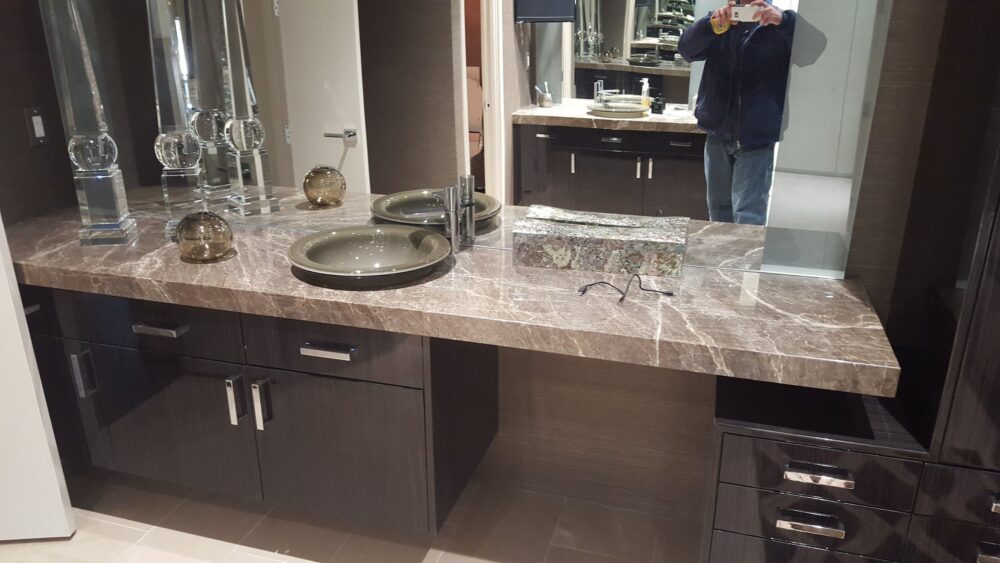The Truth About Marble Stains: What You Really Need to Know
You’ve probably heard the warnings a dozen times: marble is too delicate for kitchens, it stains if you even look at it wrong, and one drop of lemon juice will ruin it forever. These concerns keep countless homeowners from choosing the elegant natural stone they truly want in their homes. At Moreno Granite, we’ve spent years working with marble installations and heard every worry under the sun. The reality about marble stains is far more nuanced than the horror stories suggest, and understanding the actual science behind it can help you make an informed decision about whether marble is right for your space.
The question “does marble stain easily” deserves a straightforward answer: marble is more porous than granite or quartz, which means it can absorb liquids if left unsealed or neglected. However, the ease of staining depends entirely on the type of marble, the quality of the sealing, and how quickly spills are addressed. Most staining issues arise not from normal use, but from misunderstandings about proper marble care and maintenance.

Understanding Marble’s Natural Properties
Marble forms from limestone under intense heat and pressure, creating that gorgeous crystalline structure we all admire. This same process, however, leaves marble with a slightly porous surface that can absorb liquids. The porosity varies significantly between different marble types. Denser marbles like Carrara show more resistance to staining than softer varieties, and darker marbles often hide potential stains better than lighter ones.
The key factor in stain resistance isn’t the marble itself but rather the protective seal applied to its surface. A properly sealed marble countertop creates a barrier that gives you plenty of time to wipe up spills before they penetrate the stone. Think of it like waterproofing a jacket: the fabric underneath might absorb water eventually, but the coating keeps you dry during normal use.
What Actually Causes Marble Stains
When people talk about marble staining, they’re usually conflating two different issues: actual stains and etching. True stains occur when a substance absorbs into the stone and leaves discoloration behind. Common culprits include red wine, coffee, oil-based products, and certain foods. These stains happen when liquids sit on the surface long enough to penetrate through or around the sealant.
Etching presents a different challenge altogether. Acidic substances like citrus juice, vinegar, or tomato sauce react chemically with the calcium carbonate in marble, creating dull spots that look like stains but are actually surface damage. This happens almost immediately upon contact and isn’t prevented by sealing. The good news? Etching affects only the surface and can often be polished out by professionals, while stains require more intensive treatment.
The Reality of Living With Marble
Modern marble maintenance is remarkably straightforward when you understand the basics. Sealing your marble every six to twelve months takes about fifteen minutes and provides robust protection against most common household spills. Daily cleaning with pH-neutral soap and water keeps the surface in excellent condition without risking chemical damage.
The distinction between high-traffic and low-traffic areas matters significantly. Marble performs beautifully in bathrooms, fireplace surrounds, and even kitchen islands where you’re mindful of what touches the surface. Many homeowners successfully use marble countertops in their kitchens by simply keeping cutting boards handy and wiping spills promptly. It’s not about living in fear of your countertops, but rather developing simple habits that protect your investment.
Making Marble Work for Your Lifestyle
Your daily routine should guide your material choices more than abstract concerns. If you’re someone who leaves coffee cups sitting for hours or frequently works with acidic ingredients without cleanup, marble might require more attention than you’d prefer. However, if you generally tidy as you go and appreciate the warmth and character of natural stone, marble could be perfectly suitable.
Consider starting with marble in less vulnerable areas to build confidence. A marble bathroom vanity gives you all the luxury and beauty without the kitchen-related stress. Once you’ve experienced how marble behaves in your home, you’ll have a much better sense of whether extending it to other areas makes sense for your household.
Trust Your Stone to the Experts
The conversation about marble and staining doesn’t need to be dramatic or fear-based. Yes, marble requires more attention than some alternatives, but it’s far from the fragile nightmare that reputation suggests. With proper sealing, reasonable care, and realistic expectations, marble delivers decades of beauty and functionality.
At Moreno Granite, we believe in helping you choose materials that truly fit your life, not just following trends or avoiding challenges. Whether marble’s elegant aesthetic is worth the extra care is a personal decision, and we’re here to provide honest guidance based on your specific situation. Reach out to our team for a consultation where we can discuss your lifestyle, preferences, and the perfect stone solution for your space.
